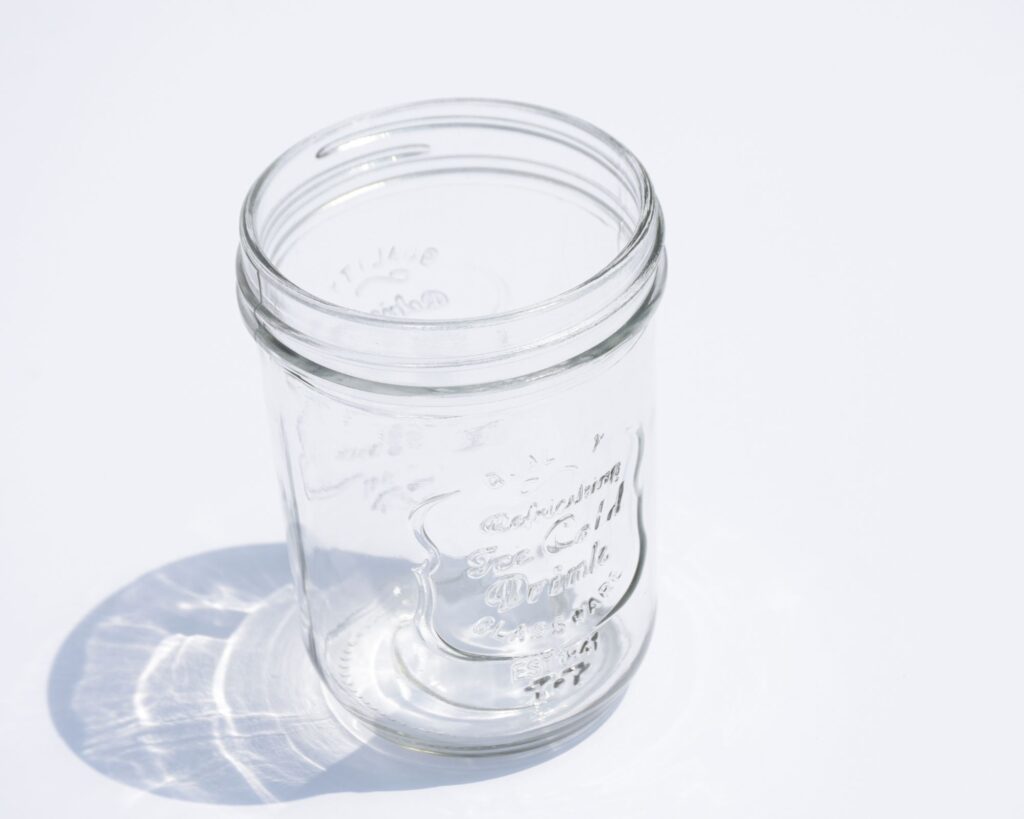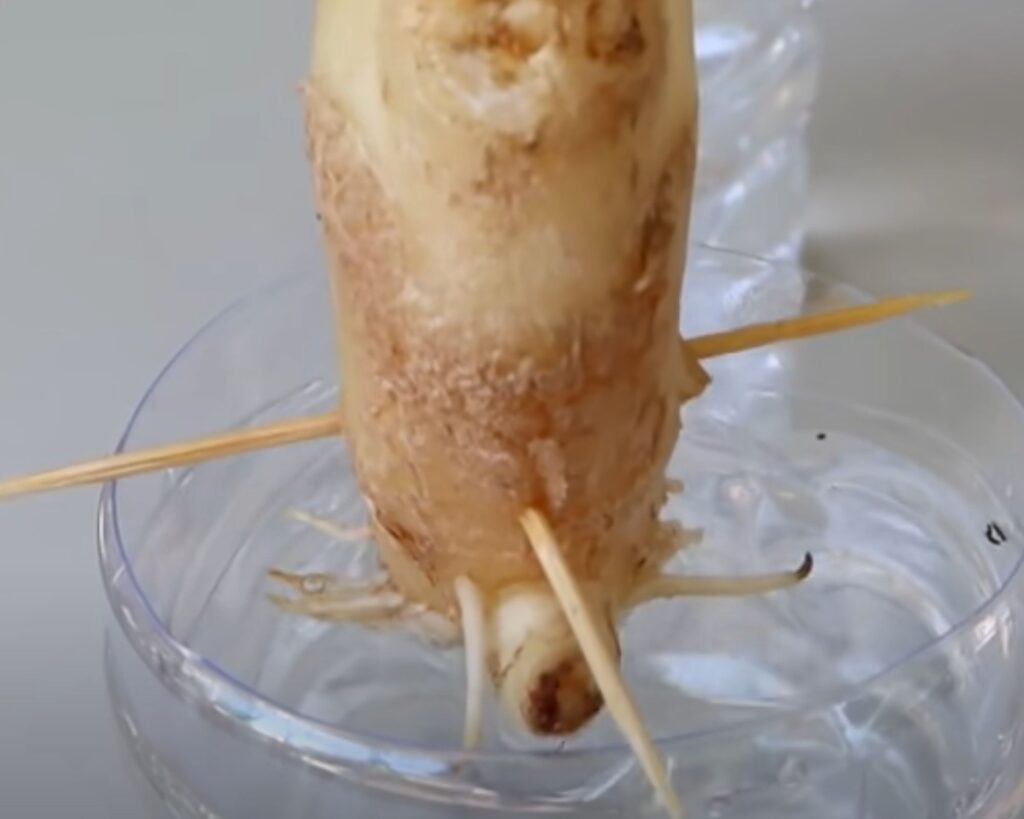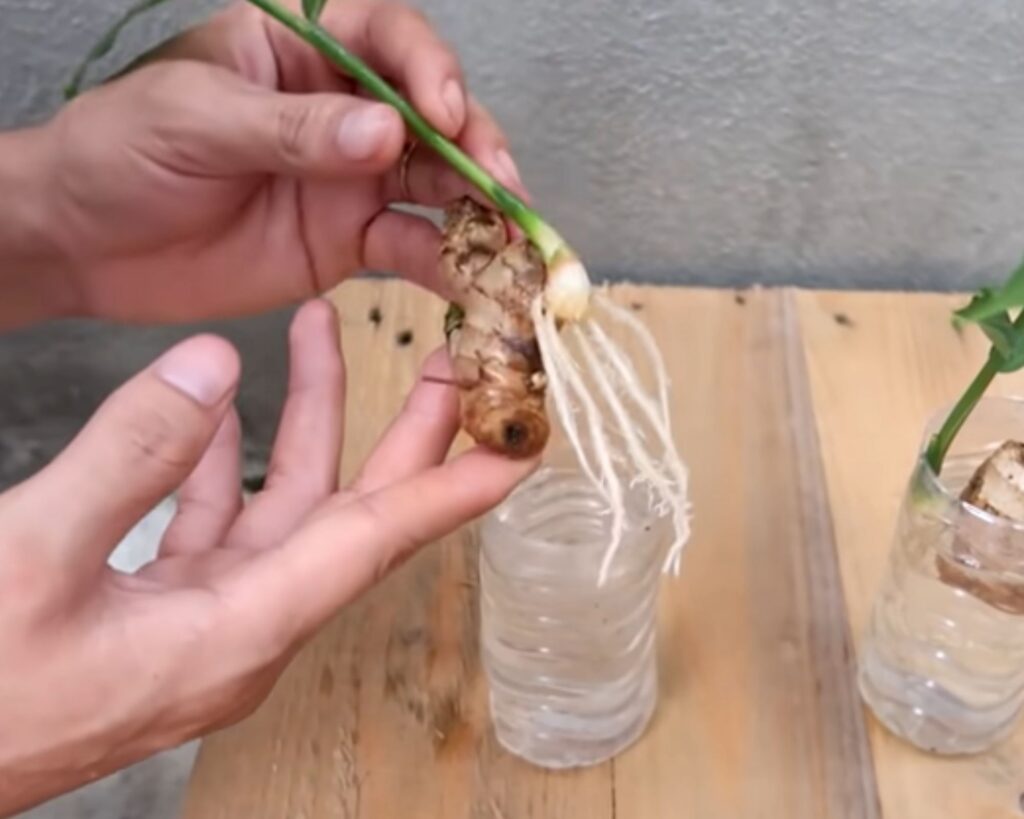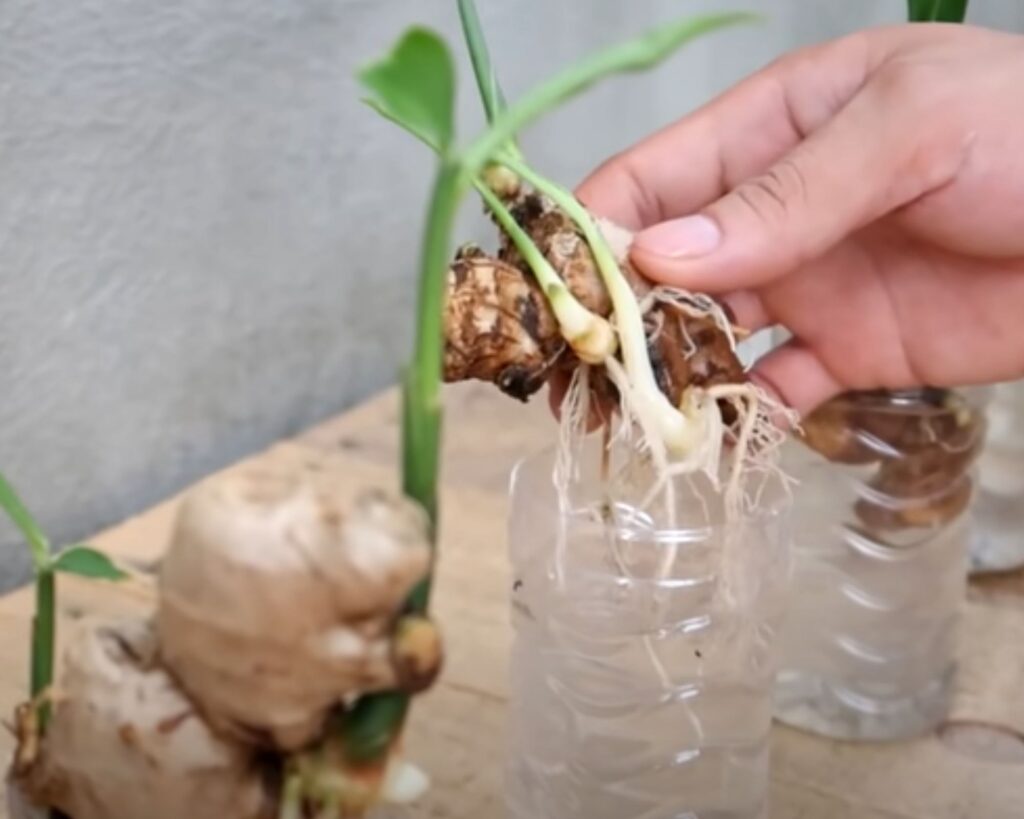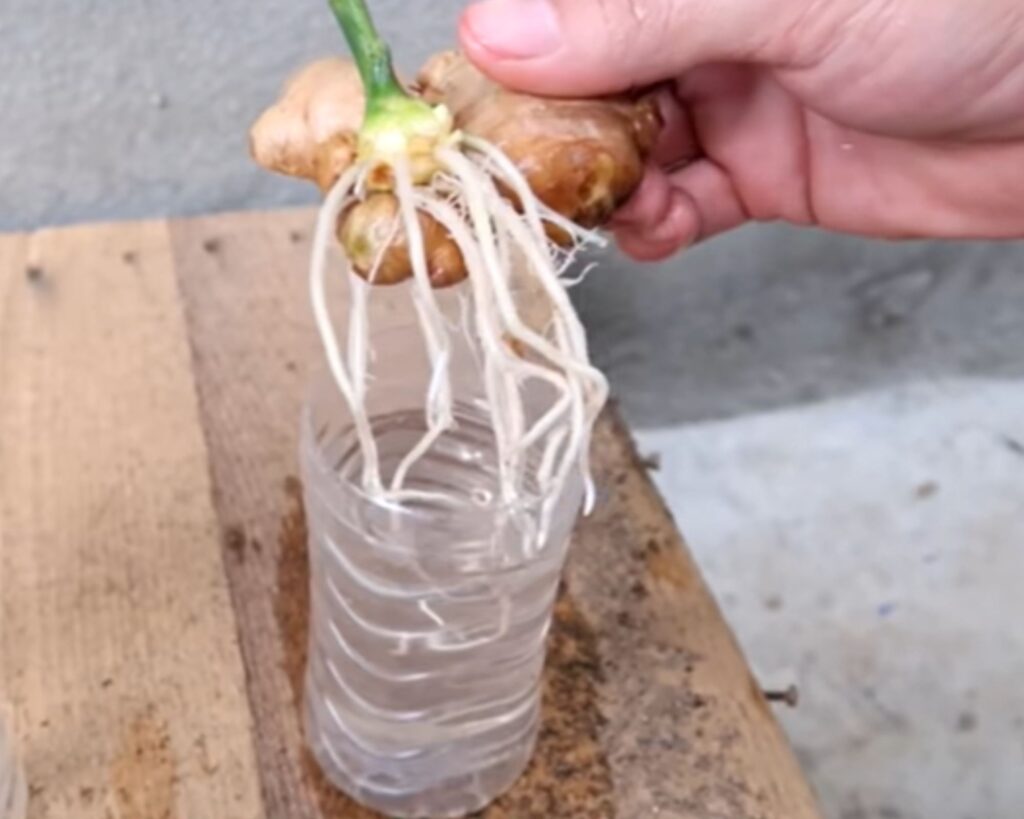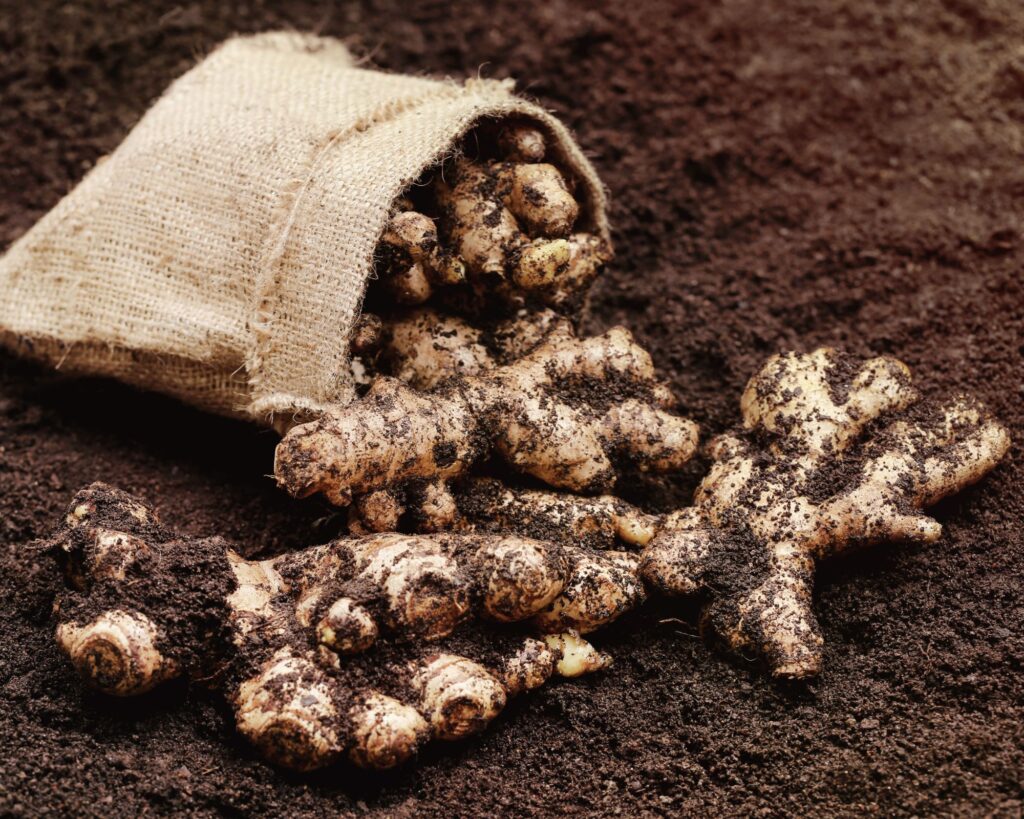Have you ever wished for a way to have fresh ginger at your fingertips all year long without the hassle of traditional gardening? Growing ginger in water might be the answer you’ve been looking for.
Starting with just a fresh ginger root and a glass of water, this easy project is perfect for beginners who want to try their hand at indoor gardening.
Imagine the satisfaction of seeing your ginger sprout roots and shoots, knowing that you’re nurturing a plant that will keep giving back.
By following these simple steps, you’ll not only grow fresh ginger but also add a touch of green to your living space.
Understanding Ginger
Ginger, a tropical plant, is best known for its spicy and aromatic roots. Growing it in water offers a unique way to cultivate this versatile plant.
What Is Ginger?
Ginger (Zingiber officinale) is a flowering plant originally from Southeast Asia. The part you eat is the rhizome, which grows horizontally underground. It’s used in cooking, tea, and even medicine.
The rhizome is knobby, brown, and can be stored for a long time. Ginger has a spicy and warm flavor, making it a favorite in many dishes worldwide. Besides its culinary use, it also has a history of medicinal applications.
Benefits of Growing Ginger in Water
Growing ginger in water is simpler and cleaner than soil cultivation. You don’t need a garden, just a container and water. This makes it ideal for indoor gardening or small spaces.
This method allows you to monitor root development closely. It’s also less susceptible to pests and diseases. Plus, you can enjoy fresh ginger year-round, as it’s easy to maintain indoors.
By growing it hydroponically, you avoid soil-related issues. This method is eco-friendly as it reduces the need for pesticides and soil amendments.
Setting Up for Success
To ensure a healthy ginger plant, start with quality ginger root, use the right container, and prepare a suitable water solution.
Choosing the Right Ginger Root
Opt for fresh ginger root with smooth skin and no signs of mold or decay. Organic ginger is ideal as it is free from chemicals that could impede growth. Ensure the root has multiple “eyes” or growth buds, as these will develop into new shoots.
Aim for a piece that is at least 2-3 inches long. Sections should have a plump appearance, indicating they are not too dry. Split larger pieces into smaller sections for planting.
Selecting Your Container
Choose a container that provides enough space for the ginger root to grow. A shallow dish or a glass jar with a broad mouth works well. Ensure it is at least 3-4 inches deep to accommodate water and the root system.
Use a clear container to easily monitor the water level and root development. Avoid metal containers, as these may react with the water or the ginger. Clean the container thoroughly to prevent any contamination.
Preparing the Water Solution
Use filtered or distilled water to avoid chemicals that may harm the ginger. Fill the container with just enough water to cover the base of the ginger root but not submerge it entirely.
Change the water every few days to maintain freshness and prevent mold. Additionally, keeping the water at room temperature supports optimal growth conditions. Optionally, you can add a few drops of liquid fertilizer to the water to provide extra nutrients.
Planting Process
Growing ginger in water is a simple process that involves submerging the ginger root correctly and ensuring it is positioned for optimal growth. You need to pay attention to the root’s placement and ensure it gets proper light and water conditions.
Steps to Submerge Ginger Root
Begin by selecting a fresh ginger root with visible buds or “eyes.” These buds are where the new plants will sprout from. Rinse the ginger root thoroughly to remove any dirt or pesticides.
Cut the ginger into small pieces, each with one or two buds.
Fill a container with water, preferably a wide jar or glass. Submerge the ginger pieces halfway into the water with the buds facing up. This prevents them from rotting.
Change the water every few days to keep it fresh. Within a week, you’ll notice roots and small shoots beginning to emerge.
Positioning for Growth
Choose a spot with indirect sunlight for your ginger. Direct sunlight can scorch the ginger, while too little light can hinder growth.
Place the container on a windowsill or a well-lit area. Keep the room temperature between 70-90°F. Monitor the water level, ensuring the roots are always submerged.
After a few weeks, your ginger will develop larger sprouts. If you notice any mold or rot, discard affected pieces and replace the water more frequently. Regularly checking these conditions ensures healthy ginger growth.
Caring for Your Ginger Plant
Proper care ensures healthy growth and a bountiful harvest. Focus on providing adequate sunlight, changing the water regularly, and keeping an eye on your plant’s overall health.
Sunlight and Temperature Requirements
Ginger thrives in warm, indirect sunlight. Find a spot near a window where it can receive ample light without being scorched.
Maintain room temperatures between 70°F and 80°F. If the room becomes too cool, consider using a small heater. Avoid placing the ginger plant in drafty areas or near sudden temperature changes, which can stress the plant.
Using a light curtain can help filter intense sunlight and prevent leaf burn.
Changing the Water
Fresh water is vital for ginger grown in water. Change the water every 3-4 days to prevent stagnation and mold growth.
Use room-temperature water to avoid shocking the roots. When changing the water, rinse the roots gently to remove any debris or slime that may have accumulated.
If you notice any murky water or unpleasant odors, consider changing the water more frequently.
Monitoring Growth and Health
Observe your ginger plant frequently to ensure it remains healthy. Look for signs of new shoots and leaves, which indicate good growth.
Check the roots for any signs of rot or disease, such as a foul smell or discoloration. If you spot any issues, trim the affected roots and change the water immediately.
Healthy ginger roots should be firm and white. Keep an eye on leaf color and texture; yellowing leaves might indicate a nutrient deficiency or water quality issue.
The Verdict: Is Growing Ginger in Water Worth It?
So, can you really grow ginger indoors in water? The answer is yes, but with some caveats. While ginger can sprout and grow in water, it may not thrive as well as it would in soil.
The lack of nutrients and the risk of rot are significant challenges, and the long-term yield may be lower than what you would achieve with traditional soil-based growing methods.
However, if you’re looking for a fun and easy way to start ginger indoors, growing it in water can be a rewarding experiment. It’s a great way to see the early stages of ginger growth up close and can serve as an interesting introduction to hydroponic gardening.
For the best results, consider using the water method to start your ginger, and then transplant it into soil once it has sprouted. This way, you can enjoy the benefits of both methods: the ease of water propagation and the nutrient richness of soil.
Whether you’re a seasoned gardener or a curious beginner, growing ginger in water offers a unique and educational gardening experience.
Growing ginger in water is an intriguing and accessible way to start your ginger cultivation journey indoors. While it offers the convenience of a soil-free setup and the possibility of year-round growth, it’s important to recognize the limitations of this method.
The lack of nutrients in water, the potential for rot, and the modest yield compared to soil-based growing all present challenges that need to be carefully managed.
To maximize success, consider using the water method as a starting point and then transitioning your ginger to soil for more robust growth.
This hybrid approach allows you to take advantage of the simplicity of water propagation while ensuring your ginger plant receives the nutrients it needs to thrive.




